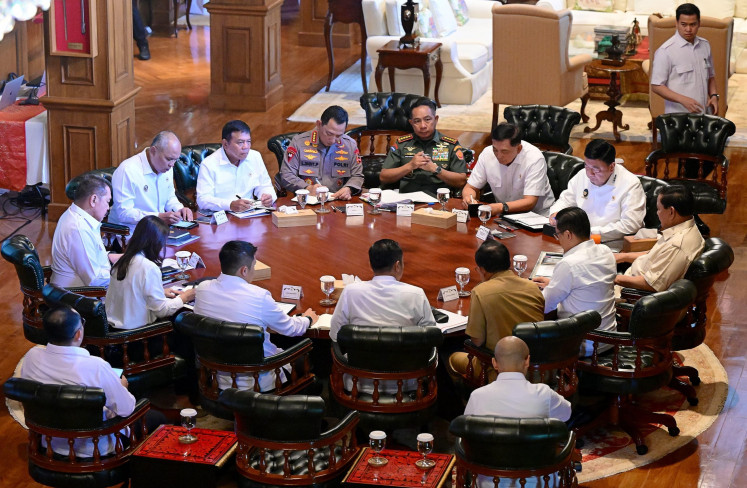Popular Reads
Top Results
Can't find what you're looking for?
View all search resultsPopular Reads
Top Results
Can't find what you're looking for?
View all search resultsBookWORM; Hikmat Darmawan: Comic Books as Literature
Comic books are perhaps one of the most misunderstood forms of cultural entertainment that humans have ever produced
Change text size
Gift Premium Articles
to Anyone
Comic books are perhaps one of the most misunderstood forms of cultural entertainment that humans have ever produced. Even compared to newer forms of media such as television and film, comics are considered by the general public to be uneducational and childish.
Hikmat Darmawan, newly appointed film committee head of the Jakarta Arts Council, knows this just as much as anyone else.
“Comics are often misunderstood as either a disturbance or a phase of reading that is more primitive than reading ‘literature’,” he said.
Fortunately, Hikmat was exposed to comics within Bobo’s children magazine, which he felt did not differentiate between reading texts with pictures and reading prose. To him, comics offered a different, if not necessarily easier reading experience when compared to prose.
“What’s interesting with comics is that there is a different way of reading them. They do not depend on words or verbs, but on pictures as a visual language,” the pop culture observer added.
As he grew older, Hikmat found that he could “read” the visuals through reading methods such as semiotics and other approaches. Once he realized this, reading comics held the same experience as reading written literature.
“There is no hierarchy to my appreciation of both comics and written literature, they are equal. There is good and bad literature, and there are good and bad comics,” he firmly said. “I don’t even differentiate between the two. There is literature within the written language and the visual language.”
According to Hikmat, people often forget comics were intended for adults too, especially in the 80s and 90s where comics were acknowledged as a form of art in many different countries.
“Meanwhile in Indonesia, comics have long been intended for adult audiences. They contained philosophy and other things, but the visual language itself was not too explored,” he said.
Here are three comic books that Hikmat finds important to him:
--------------
The Adventures of Tintin
by Herge

Blue Lotus was the first time the world was portrayed realistically in a comic. It was based on journalistic data, but the most important thing to me as a child when reading Tintin was that it gave me a sense of internationalism. Going to a lot of different countries was really fun.
--------------
Watchmen
by Alan Moore

It opened the opportunity for “idea comics” really well. I achieved intellectual satisfaction when reading it, but plot-wise it is also a great detective story.
--------------
Cages
by Dave McKeane

It’s an art manifesto, but truthfully when I was smaller it was all the old silat comics that had a lot of influence. They gave values of heroism, stuff like that. How to face the challenges of life *laughs*.
— JP/Adil Akbar.
The writer is an intern at The Jakarta Post










